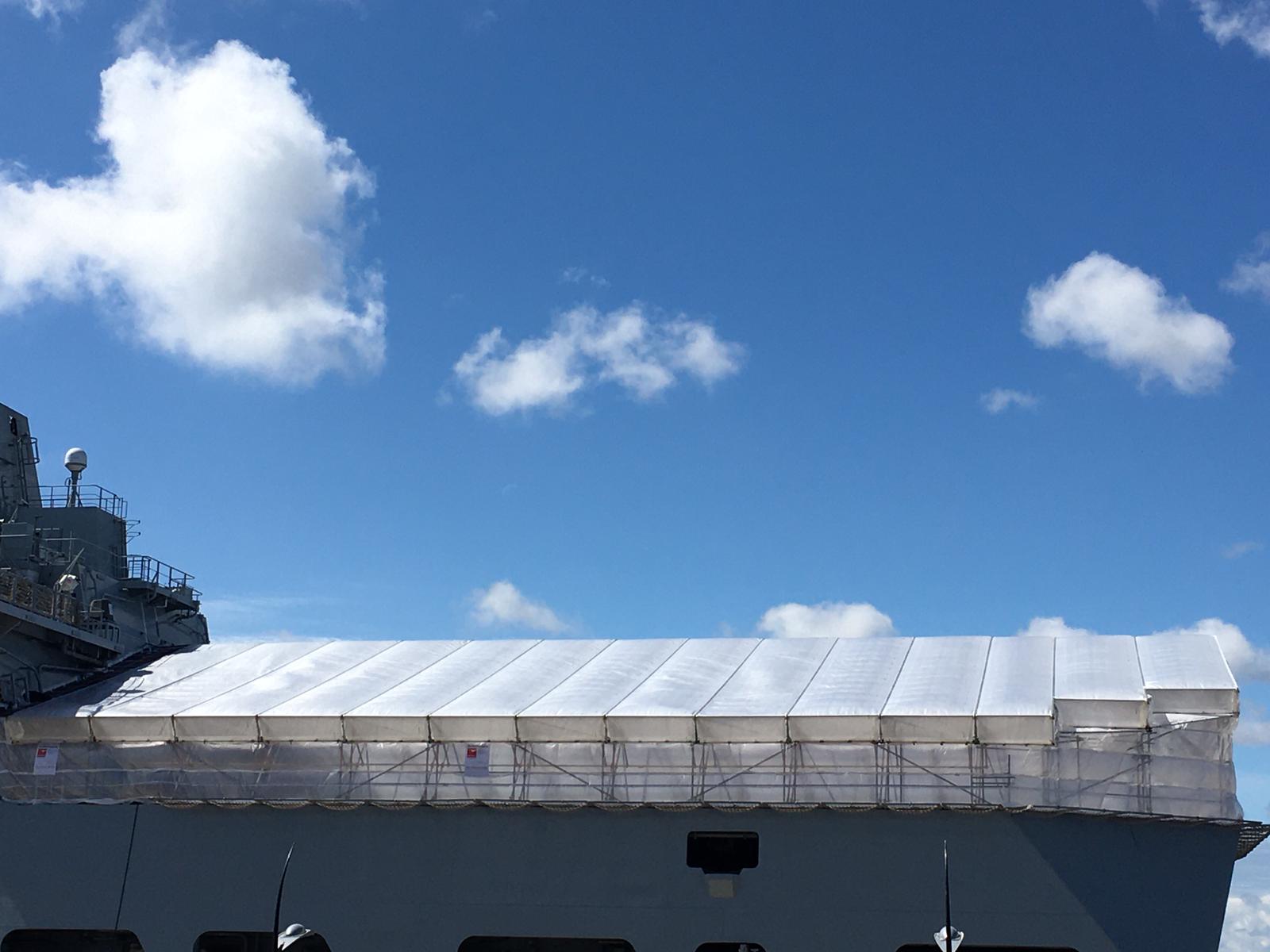
Generation’s Uni-Roof enables a new approach to ship refurbishment. Assembly time and the versatility of traditional temporary structures required for ship refurbishments can significantly impact on schedules causing costly delays in port.
Altrad Services was asked to replace a helideck anti-skid coating. They selected Generation’s Uni-Roof to provide a dry and temperature-controlled environment.
The Uni-Roof’s strength, versatility and speed enabled a staged delivery approach, minimising downtime whilst ensuring the quality of the refurbishment.
The Challenges
The refurbishment had strict time constraints to fit within the tides, port and vessel schedule to minimise down-time. The chosen solution required effective logistics management and quick assembly and dis-assembly.
The effective application and painting meant the scaffolding and temporary roof solution had no contact points on the Heli-Deck.
The structure had to provide a dry and temperature-controlled environment to support application and drying.
To minimise downtime and maintain the ship’s schedule, the temporary structure needed to be transported between different ports in situ. The weight of the temporary roof and scaffolding support structure required was estimated to be 15 Tonnes.
Solution
To fit in with the planned vessel movements, the project was designed and executed in two stages:
Stage 1:
The design created a completed scaffolding support structure and the Uni-Roof frame, minus the encapsulation. This assembled at the initial berth, allowing the vessel to maintain its schedule and sail to the final berth where the work could be undertaken.
Stage 2:
At the final berth roof, sheeting and encapsulation were implemented to create the weather-proof environment required for works.
A program of work was produced and maintained operationally by the vessel owner, crew, Altrad and Generation teams. This programming provided flexibility in case vessel movement dates needed to be amended.
The design solution created by Altrad Services and DESSA engineers involved connecting the temporary roof using double uprights attached to the hull kicker plate. This was restrained using five-tonne ratchet straps.
The movement of the vessel from first to the second berth with a completed weather envelope would have increased wind loadings substantially to the temporary structure. The two-stage approach allowed the safe transportation of the fourth design of the Uni-Roof means sheeting and encapsulation can be added very rapidly.
The design utilised the strengths of the Uni-Roof unique sliding-button system. This retains the Keder Sheet Tracking for fast installation of weatherproof sheeting. The design also allows operatives to install the roof Sheets from the eaves of the temporary roof, mitigating the need to climb over the roof during installation. This is particularly relevant for safe operations on water and unstable platforms.
This feature enabled the two-stage approach to developing the frame before allowing the ship to sail. supporting structure and roof beams are erected at the first berth (with additional support and tensioning ratchet straps installed following design input).
A standby team was deployed onboard to monitor any potential structural movements during the vessel transit from first to the second berth. This allowed for both a prompt start and safe completion of works following the vessel docking at the second berth.
Material movements were executed by crane from the dockside directly on to the vessel helideck. The modular construction of the Uni-Roof and approach meant crane usage was minimised further reducing costs.
The Outcome
The project has highlighted how ship refurbishments can be done with minimal disruption to the schedule of the ship. The Uni-Roof solution can be applied to any project requiring an on-deck controlled environment.
This design can now be utilised for similar vessels and projects creating significant cost savings. The temporary structure design can also be utilised for the 3 other Tide Class Vessels.
The temporary roof sheeting, when removed and stacked/stored correctly, could be re-used on this and potentially other classes of RFA vessel requiring Heli deck encapsulation.